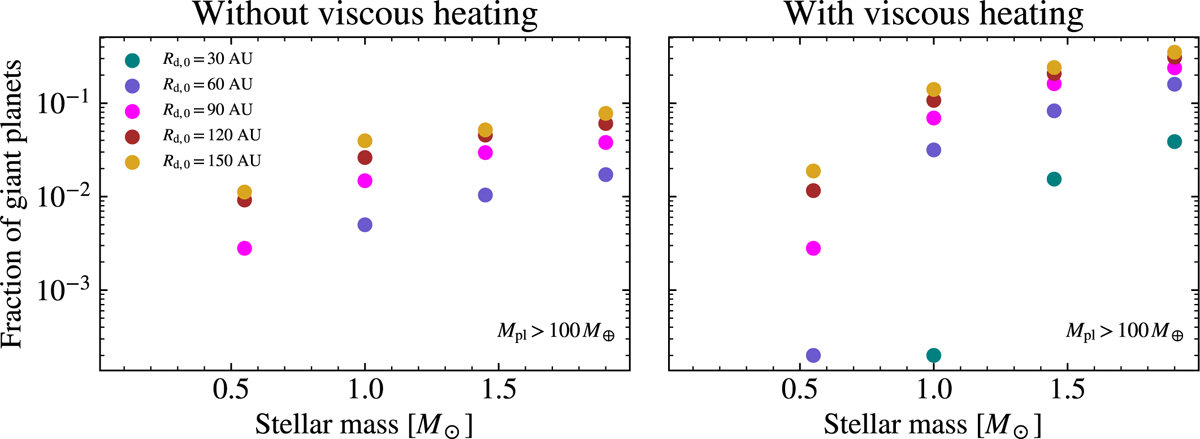Fig. 6

Download original image
Giant planet fraction at all semi-major axes as a function of stellar mass and disc size. With or without viscous heating, the giant planet fraction increases with increasing stellar mass for all disc sizes where a giant planet can form to begin with. The lower stellar mass limit for giant planet formation is 0.5 M⊙ in both models. In the irradiated case (left), the lower disc size limit for giant planets to form is 60 AU (90 AU for M★ = 0.5 M⊙). In contrast, when viscous heating is included, the lower disc size limit is as low as 30 AU for solar-mass stars and above, while it is 60 AU for stars with M★ = 0.5 M⊙.
Current usage metrics show cumulative count of Article Views (full-text article views including HTML views, PDF and ePub downloads, according to the available data) and Abstracts Views on Vision4Press platform.
Data correspond to usage on the plateform after 2015. The current usage metrics is available 48-96 hours after online publication and is updated daily on week days.
Initial download of the metrics may take a while.


